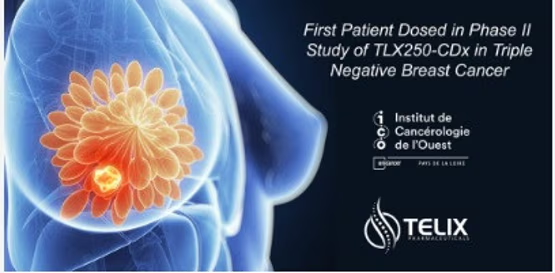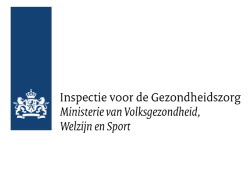First Patient Dosed in Phase II Study of TLX250-CDx in Triple-Negative Breast Cancer
The below product is manufactured at RTM
First Patient Dosed in Phase II Study of TLX250-CDx in Triple-Negative Breast Cancer
Potential Indication Expansion for Telix’s Core Kidney Cancer Theranostic Program
Melbourne (Australia) and Liège (Belgium) – 5 October 2021. Telix announces that a first patient has been dosed in a Phase II study of TLX250-CDx in patients with triple-negative breast cancer
Telix is pleased to announce that a first patient has been dosed in a Phase II study of TLX250-CDx (89Zr-DFO-girentuximab) in patients with triple-negative breast cancer (TNBC) at the Institut de Cancérologie de l’Ouest (ICO) in St Herblain, France.
‘OPALESCENCE’, an investigator-led study being undertaken by Dr. Caroline Rousseau at ICO, aims to evaluate how carbonic anhydrase IX (CA9) imaging with positron emission tomography (PET) can be utilised for diagnosis and staging of TNBC and to develop a deeper understanding of CA9 as a potential therapeutic target in this patient population. The study will enrol 12 patients. TNBC has a poorer prognosis than other breast cancer subtypes and is characterised by its aggressive behaviour and distinct patterns of metastasis. There is a major unmet need due to the lack of targeted therapies for TNBC.
CA9 is a transmembrane protein that is highly over-expressed in clear cell renal cancer (ccRCC) as well as a number of other different cancer types, making it an attractive potential target for both new imaging and therapeutic modalities. Telix’s core CA9 program is focused on ccRCC, the most common form of kidney cancer, and is the subject of the ZIRCON Phase III (imaging) and STARLITE Phase II (therapy) studies. OPALESCENCE is the second in a comprehensive series of studies that will evaluate CA9 expression in cancers other than ccRCC, supporting Telix’s goal to rapidly expand the CA9 program into other indications. A study targeting CA9 in urothelial carcinoma or bladder cancer is underway with other collaborations being developed for ovarian, colorectal, head and neck, lung, and pancreatic cancers.
Telix Chief Medical Officer, Dr. Colin Hayward stated, “Telix is very pleased to see a first patient dosed in this important study of TLX250-CDx in TNBC, an aggressive breast cancer subtype that is poorly served by current tracers. Should the targeting properties of this PET/CT imaging tracer be established in TNBC, our intention is to broaden future applications for Telix’s lutetium-177 and actinium-225 based CA9 therapies. We would like to express our gratitude to Dr. Caroline Rousseau and her clinical team at ICO, as well as the patients that will contribute to this ground-breaking study.”
Principal Investigator for the OPALESCENCE study, Dr. Caroline Rousseau stated, “Theranostic approaches to diagnosis and treatment are transforming prostate cancer. Triple negative breast cancer has a poor prognosis, so the potential to identify new targets with potential theranostic approaches for these patients is very exciting.”

Ander nieuws

GMP-certificaat behaald
Vandaag hebben wij ons GMP-certificaat ontvangen!De inspectie is uitstekend verlopen en er zijn geen...

Bezoek onze stand!
Van 15 t/m 19 oktober is Radboud translational medicine aanwezig op het congres van de European Asso...

LinkedIn post Isologic goes electric
🔌Isologic Goes Electric! We are excited to announce the expansion of our electric fleet with the a...
ABX heeft een handelsvergunning ontvangen voor Radelumin® in Duitsland
ABX heeft een vergunning ontvangen voor het in de handel brengen van de radiotracer Radelumin® in Du...
Geïnteresseerd in een samenwerking?
Neem contact met ons op om de mogelijkheden te bespreken.





